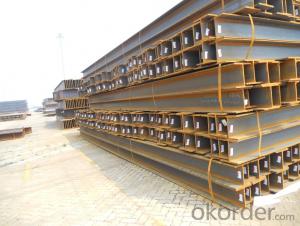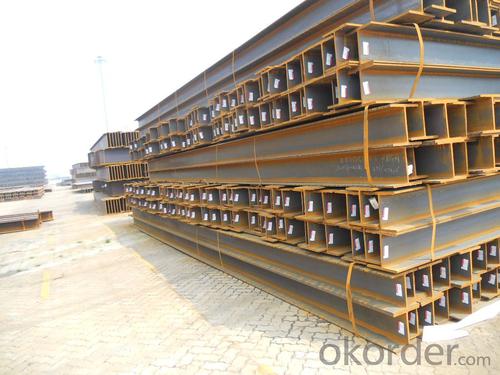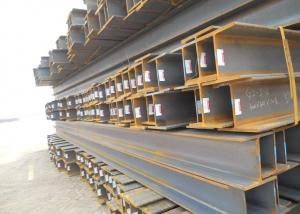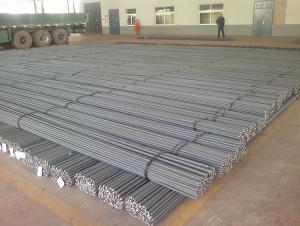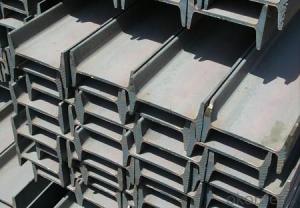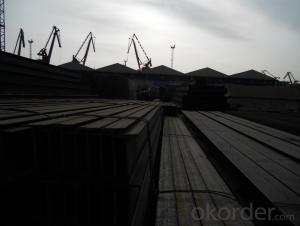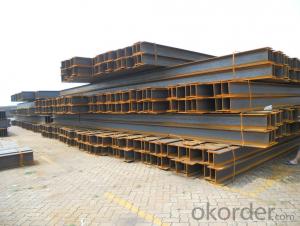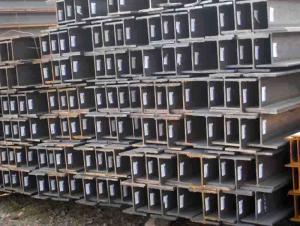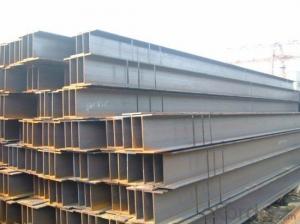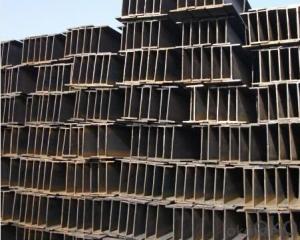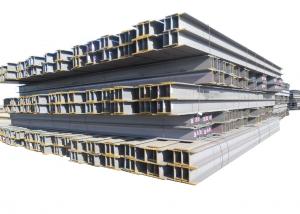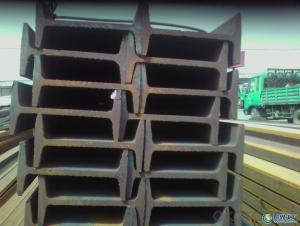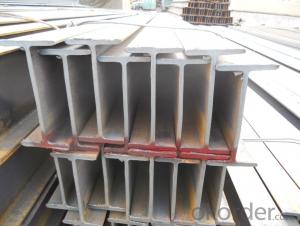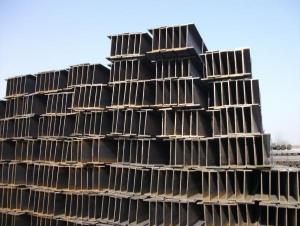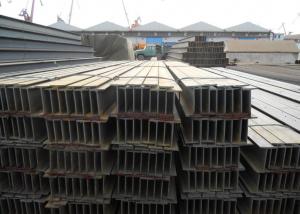Hot Rolled Steel H-Beam for Structure Steel
- Loading Port:
- Tianjin
- Payment Terms:
- TT OR LC
- Min Order Qty:
- 30000 m.t.
- Supply Capability:
- 150000 m.t./month
OKorder Service Pledge
OKorder Financial Service
You Might Also Like
Specification
Product Description:
Product Description:
OKorder is offering Hot Rolled Steel H-Beam for Structure Steel at great prices with worldwide shipping. Our supplier is a world-class manufacturer of steel, with our products utilized the world over. OKorder annually supplies products to European, North American and Asian markets. We provide quotations within 24 hours of receiving an inquiry and guarantee competitive prices.
Product Applications:
Hot Rolled Steel H-Beam for Structure Steel are ideal for structural applications and are widely used in the construction of buildings and bridges, and the manufacturing, petrochemical, and transportation industries.
Product Advantages:
OKorder's Hot Rolled Steel H-Beam for Structure Steel are durable, strong, and resist corrosion.
Main Product Features:
· Premium quality
· Prompt delivery & seaworthy packing (30 days after receiving deposit)
· Corrosion resistance
· Can be recycled and reused
· Mill test certification
· Professional Service
· Competitive pricing
Product Specifications:
Specifications of Hot Rolled Steel H-Beam for Structure Steel
1. Standard: GB700-88, Q235B2.
2. Grade: Q235, SS400 or Equivalent
3. Length: 6m,10m, 12m as following table
4. Invoicing on theoretical weight or actual weight as customer request
5.Payment: TT or L/C
6. Sizes:
SIZE(mm) | DIMENSION(kg/m) |
100*100 | 16.9 |
125*125 | 23.6 |
150*75 | 14 |
150*150 | 31.1 |
148*100 | 20.7 |
198*99 | 17.8 |
200*100 | 20.9 |
248*124 | 25.1 |
250*125 | 29 |
Usage & Applications of Hot Rolled Steel H-Beam for Structure Steel
Commercial building structure ;Pre-engineered buildings; Machinery support structure; Prefabricated structure; Medium scale bridges; Ship-building structure. etc.
Packaging & Delivery of Hot Rolled Structural Steel H Beam
1. Packing: it is nude packed in bundles by steel wire rod
2. Bundle weight: not more than 3.5MT for bulk vessel; less than 3 MT for container load
3. Marks:
Color marking: There will be color marking on both end of the bundle for the cargo delivered by bulk vessel. That makes it easily to distinguish at the destination port.
Tag mark: there will be tag mark tied up on the bundles. The information usually including supplier logo and name, product name, made in China, shipping marks and other information request by the customer.
If loading by container the marking is not needed, but we will prepare it as customer request.
4. Transportation: the goods are delivered by truck from mill to loading port, the maximum quantity can be loaded is around 40MTs by each truck. If the order quantity cannot reach the full truck loaded, the transportation cost per ton will be little higher than full load.
5. Delivered by container or bulk vessel
Production flow of Hot Rolled Structural Steel H Beam
Material prepare (billet) —heat up—rough rolling—precision rolling—cooling—packing—storage and transportation
FAQ:
Q1: Why buy Materials & Equipment from OKorder.com?
A1: All products offered byOKorder.com are carefully selected from China's most reliable manufacturing enterprises. Through its ISO certifications, OKorder.com adheres to the highest standards and a commitment to supply chain safety and customer satisfaction.
Q2: How do we guarantee the quality of our products?
A2: We have established an advanced quality management system which conducts strict quality tests at every step, from raw materials to the final product. At the same time, we provide extensive follow-up service assurances as required.
Q3: How soon can we receive the product after purchase?
A3: Within three days of placing an order, we will begin production. The specific shipping date is dependent upon international and government factors, but is typically 7 to 10 workdays.
Q4: What makes stainless steel stainless?
A4: Stainless steel must contain at least 10.5 % chromium. It is this element that reacts with the oxygen in the air to form a complex chrome-oxide surface layer that is invisible but strong enough to prevent further oxygen from "staining" (rusting) the surface. Higher levels of chromium and the addition of other alloying elements such as nickel and molybdenum enhance this surface layer and improve the corrosion resistance of the stainless material.
Images:
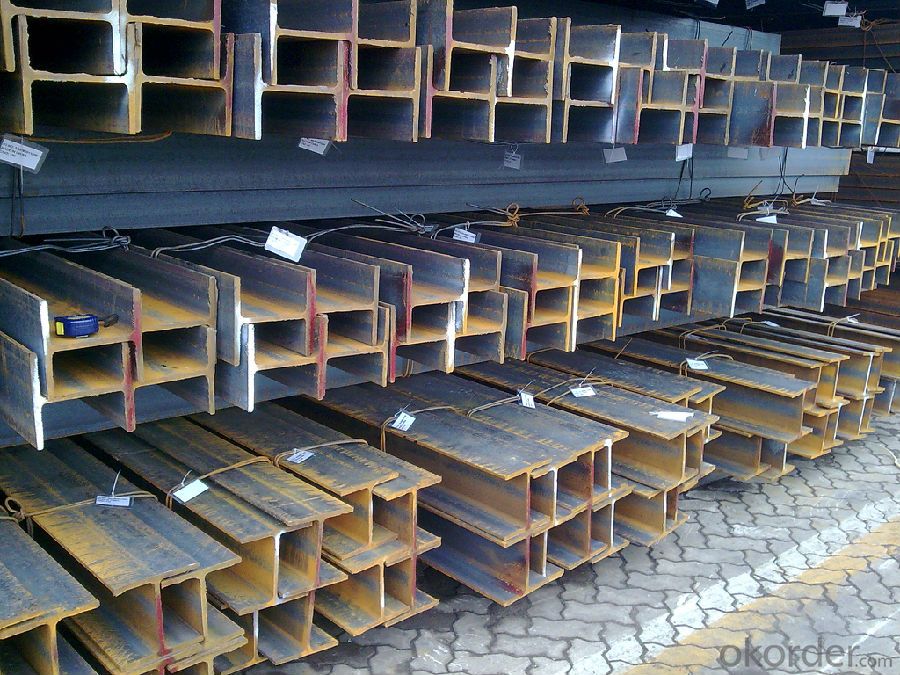
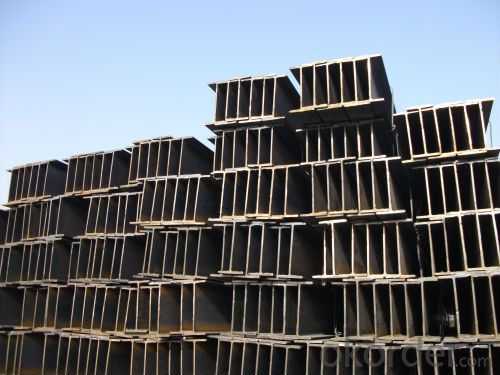
- Q: Are steel H-beams suitable for mezzanine flooring?
- Yes, steel H-beams are commonly used for mezzanine flooring due to their strength, durability, and load-bearing capacity. Mezzanine floors are typically installed in industrial or commercial settings to create additional usable space within a building. Steel H-beams provide excellent structural support and can withstand heavy loads, making them suitable for supporting the weight of the mezzanine flooring and any equipment or materials that will be placed on it. Additionally, steel H-beams can be easily customized to accommodate specific design requirements and can be seamlessly integrated with other structural elements of the mezzanine system. Overall, steel H-beams are a reliable and practical choice for mezzanine flooring.
- Q: How do steel H-beams contribute to the overall stability of a building?
- Steel H-beams contribute to the overall stability of a building by providing structural support and load-bearing capacity. The H-shape design allows for even distribution of weight and enables the beam to efficiently bear heavy loads. Additionally, the rigid nature of steel helps to resist bending, twisting, and deformation, thereby enhancing the structural integrity of the building.
- Q: Can steel H-beams be used in the construction of automotive showrooms or dealerships?
- Yes, steel H-beams can be used in the construction of automotive showrooms or dealerships. Steel H-beams are commonly used in construction due to their strength and durability. They provide structural support and can be used for framing purposes, such as supporting the roof and walls of a building. In the case of automotive showrooms or dealerships, steel H-beams can be used to create large open spaces, allowing for wide and unobstructed areas to display vehicles. The strength of steel H-beams also allows for the construction of multi-story buildings, which can be beneficial for showrooms or dealerships that require multiple levels for offices, storage, or additional display areas. Additionally, steel H-beams offer flexibility in design and can be easily customized to meet specific architectural requirements and aesthetic preferences. They can be painted or coated to enhance their appearance and provide protection against corrosion. Overall, the use of steel H-beams in the construction of automotive showrooms or dealerships is a common and viable option due to their strength, durability, and versatility.
- Q: Can steel H-beams be used for warehouses?
- Yes, steel H-beams can be used for warehouses. Steel H-beams are commonly used in the construction industry for their strength, durability, and ability to support heavy loads. They provide structural stability and allow for open and flexible floor plans in warehouse construction.
- Q: Can steel H-beams be used in roof truss systems?
- Yes, steel H-beams can be used in roof truss systems. Steel H-beams are commonly used in construction for their strength and durability. They provide excellent support and stability, making them suitable for various structural applications, including roof truss systems. The use of steel H-beams in roof trusses ensures a strong and reliable framework, capable of withstanding heavy loads and adverse weather conditions. Additionally, steel H-beams can be easily fabricated and customized to meet specific design requirements, making them a versatile choice for roof truss systems.
- Q: What's the difference between welded H - section steel and high frequency welded H - section steel and hot rolled H section steel?
- The shunt end piece (T profiles, H59 1 brass) two pieces with the resistance sheet (thickness of 1.5, 20 wide, 45 long, 5 pieces of copper manganese); in high frequency heating mode; copper phosphorus solder welding; brazing process requirements: less than or equal to 1min, focused on solving the problem: positioning and welding (before brazing the process of using gas welding method). The main technical and economic indicators: after welding product surface without oxidation, the welding quality is higher than that of gas welding; resistance welding end pieces and reliable, welding without melting and deformation resistance; ensure shunt; the production efficiency is increased by two times.
- Q: What are the differences between hot-rolled and cold-formed steel H-beams?
- Hot-rolled and cold-formed steel H-beams are two commonly used structural steel products that have distinct differences in their manufacturing processes and properties. Firstly, the manufacturing process for hot-rolled H-beams involves heating a steel billet or slab above its recrystallization temperature and then passing it through a series of rollers to shape it into the desired H-beam profile. This process results in a finished product with a rough surface texture and a scaled outer layer. In contrast, cold-formed H-beams are produced by bending and shaping steel sheets or strips at room temperature, typically through a series of rollers or press brakes. This method produces a smoother surface finish and eliminates the need for scaling. In terms of their properties, hot-rolled H-beams tend to have higher strength and load-bearing capacity compared to cold-formed H-beams. This is due to the structural changes that occur during the hot-rolling process, which refine the grain structure of the steel and increase its overall toughness. Cold-formed H-beams, on the other hand, have a higher degree of dimensional accuracy and consistency due to the precise shaping and bending process. This makes them suitable for applications where precise measurements and tight tolerances are required. Another significant difference lies in their cost and availability. Hot-rolled H-beams are generally more readily available and cost-effective compared to cold-formed H-beams. The hot-rolling process is faster and more efficient, allowing for larger production volumes and lower production costs. Cold-formed H-beams, on the other hand, may require additional processing and fabrication steps, which can increase their overall cost. In summary, the main differences between hot-rolled and cold-formed steel H-beams lie in their manufacturing processes, surface finish, properties, and cost. Hot-rolled H-beams offer higher strength and load-bearing capacity, while cold-formed H-beams provide greater dimensional accuracy and consistency. The choice between the two depends on the specific requirements of the project, including budget, structural needs, and aesthetic considerations.
- Q: Are steel H-beams suitable for supporting transmission towers?
- Yes, steel H-beams are suitable for supporting transmission towers. H-beams are known for their high strength-to-weight ratio, making them ideal for withstanding heavy loads and providing structural stability. Additionally, steel offers excellent durability and resistance to environmental factors, making it a reliable choice for supporting transmission towers, which require long-term stability and reliability.
- Q: How do Steel H-Beams perform in seismic or high-wind conditions?
- Steel H-Beams are well-known for their exceptional performance in both seismic and high-wind conditions. These beams are specifically designed to withstand the forces exerted during earthquakes and strong winds, making them a preferred choice for structural applications in areas prone to such events. In seismic conditions, Steel H-Beams are highly effective due to their inherent strength and flexibility. The H-shape design provides increased resistance against lateral forces, allowing the beams to better distribute and dissipate the energy generated by earthquake vibrations. This helps in minimizing damage to the overall structure and enhances the safety of the building and its occupants. Similarly, in high-wind conditions, Steel H-Beams perform exceptionally well. The structural properties of these beams, such as their high strength-to-weight ratio and rigidity, make them capable of withstanding strong wind loads. The H-Beams' shape allows for efficient transfer of wind forces to the foundation, preventing excessive movement and ensuring structural stability. Moreover, Steel H-Beams can be further enhanced with various methods to improve their performance in seismic or high-wind conditions. Reinforcing the beams with additional steel plates, using higher-grade steel, or implementing advanced connection details can all contribute to increased resilience and reliability. Overall, Steel H-Beams are a reliable choice for construction projects in areas prone to seismic or high-wind conditions. Their ability to withstand and dissipate forces generated by earthquakes or strong winds makes them an ideal structural element, ensuring the safety and durability of buildings in challenging environments.
- Q: What are the thermal conductivity properties of steel H-beams?
- Steel H-beams exhibit a relatively high level of thermal conductivity. Thermal conductivity refers to a material's capacity to transfer heat. Compared to materials like wood or plastics, steel demonstrates superior thermal conductivity due to its ability to conduct heat effectively. The precise thermal conductivity of steel H-beams may differ depending on the specific alloy and composition of the steel utilized. Nevertheless, on average, steel exhibits a thermal conductivity range of 15 to 50 W/m·K (watts per meter kelvin). Consequently, steel H-beams excel in facilitating heat transfer and are capable of rapidly distributing thermal energy throughout their structure. The exceptional thermal conductivity of steel H-beams renders them suitable for diverse applications within the fields of construction and engineering. For instance, when employed in buildings, steel H-beams can aid in the dissipation of heat and the prevention of hot spots. Moreover, they can be utilized in heat transfer systems such as heat exchangers, where efficient heat transfer is paramount. In summary, steel H-beams possess commendable thermal conductivity properties, enabling them to conduct and distribute heat efficiently.
Send your message to us
Hot Rolled Steel H-Beam for Structure Steel
- Loading Port:
- Tianjin
- Payment Terms:
- TT OR LC
- Min Order Qty:
- 30000 m.t.
- Supply Capability:
- 150000 m.t./month
OKorder Service Pledge
OKorder Financial Service
Similar products
Hot products
Hot Searches
Related keywords
